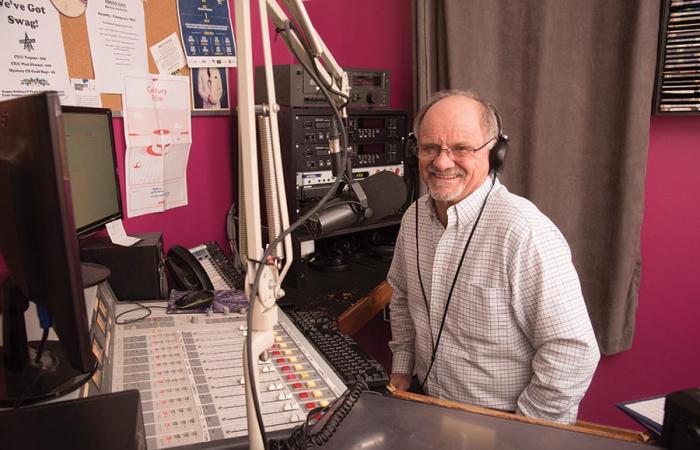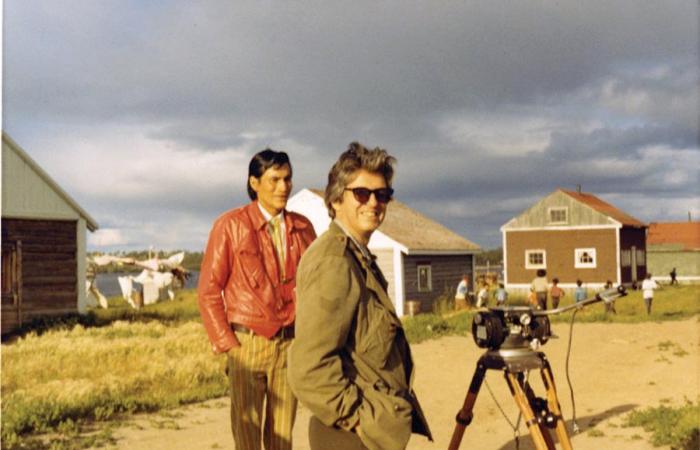Jim Hyder reveals how he developed his passion
Like many good stories, this one begins with a vivid memory. It was 1971 and I was visiting my older sister in Toronto. She took me to Ontario Place, a new park that had just opened on Lake Ontario. We went to the Cinesphere, the world’s first permanent IMAX movie theatre and I had the chance to see one of the first IMAX films ever created, North of Superior. The IMAX screen was the largest film screen at the time and the experience was a symphony of sight and sound. North of Superior opened with a drum beat and then an unforgettable montage of a low-level flight over the waters of Lake Superior and then up and over the Sleeping Giant. As the drum beat grew louder, you felt like you were soaring over those cliffs and swooping down to the dark waters below. Being in the theatre and watching that film was an exhilarating, unforgettable experience as a movie-goer. I always knew I lived in a beautiful place, but here it was on a huge screen for all to experience and enjoy.
Nearly twenty years after the film was made, I came back to Thunder Bay and started to work at the City of Thunder Bay Homes for the Aged. One of my work colleagues at Dawson Court Home for the Aged was Jim Hyder. At that time, he worked as an Education Coordinator for Dawson Court and I was able to work with him on some staff training films on kitchen safety. It came out in our conversations that film-making was something that Jim was very good at. In fact, he had been one of the assistant cameramen who had helped to produce North of Superior, that movie that had made such an impression on me so many years before.
And now, almost fifty years after I first saw that ground-breaking film, I’ve been able to work with Jim Hyder again on his CILU (Lakehead University) Radio program, Senior Moments.
Jim got interested in video and storytelling when his dad, who had worked for TV Ontario, brought home the first generation 1/2” tape video recorder. This was the first videotape that was ever invented and it revolutionized the film-making industry. Jim got a chance to play with that video recorder and he became hooked on telling stories using video.
“In the late 60’s, the National Film Board established a program called “Challenge for Change” and seven film-makers were hired in Canada,” says Jim Hyder. “I’ve always believed that film is a tool for communication and social change. In the early days we helped people tell their stories on a community access video network called “Monitor North”.
Jim remembers a group in Nolalu who had come together because a school was closing and they wanted it to be turned over into a community centre. The community members made a video and took it to a Board meeting. The video helped present their case and that centre is still part of the community today.
It was while Jim was working on the community access video network in the early 1970’s that his chance to work on North of Superior came to be. The IMAX crew was sharing the space with them in the old CN Railway Station while they were in Thunder Bay shooting the film. It turned out that an assistant cameraman from New York was unable to come to Thunder Bay to film so the director and co-inventor of the IMAX film format, Graeme Ferguson, needed someone to work with him. And that turned out to be Jim.
Making the classic film was memorable for Jim. The IMAX camera was the first and only camera of its kind at the time. It was huge and needed two camera operators. It was extremely expensive to operate as it used the same 70mm film stock used for feature-length movies. In fact, the film stock that was used in Thunder Bay was leftover film that had been used in Stanley Kubrick’s 1968 classic, 2001: A Space Odyssey.
Because of the size of the camera, Jim’s job was to stand at the front of the camera and keep it in focus while shooting. When the camera wasn’t in use, his job was to clean and maintain the camera. As a local he was also able to suggest scenes to shoot. His suggestion to include a tree planting scene in Hurkett made it into the final film.
As a teenager, the scene in the film that stood out in my mind was the tubing at Bernosky’s hill. Piling on an inner tube and sailing down an icy slope was one of my favourite things to do as a kid and I’m sure I recognized people who were in those Bernosky’s scenes! Jim remembered shooting that scene because it was his job that day to help people pile onto the tube and push them down the hill. “I remember asking Graeme what we’d do if all the tubes piled up together at the bottom of the hill and he said that would be great!”
But for Jim, his most memorable scene was with the canoeists on the Pigeon River. It was the last scene shot for the film. “It was a dangerous shot and that’s why it was the last shot. If something happened to the camera, at least they would have the footage that had already been shot.” Expert canoeists were hired. The camera was self-mounted in one canoe. “I was standing with Graeme at the side of the river and he was so tense, worried that the shot wouldn’t work. Then the canoe with the camera – the only IMAX camera at the time in the world – flipped over. Everyone scrambled to reach it. One of the crew members was able to grab a hold of it and pull it out of the water. The camera was still filming.”
With the camera full of water, no one knew what to do. Who are you going to call? Hollywood, of course. They were the only ones working on 70 mm film, so they might have known what to do. They informed the crew in Thunder Bay not to open the camera, but to fly it down immediately to Hollywood. A member of the crew took the camera, still full of water and the film of the canoe scene, to Hollywood. The experts there were able to open the camera, expose the film and save the scene. If you ever have a chance to see the film, watch for the canoe scene where that crew member’s hand reaches to grab and save the camera!
Today, video is omni-present and it seems that everyone can make a film and find an audience on YouTube or Vimeo. Jim still teaches video making today and has been working with children in the Environmental Arts Network to let them learn about the art of telling a story with video. Kids today are savvy with the technology, but Jim encourages them to step back and think about how to tell the story.
As a storyteller, Jim enjoys making radio documentaries as well. He made the first radio documentary in Northwestern Ontario and his CBC Radio documentary, Forest in Crisis, became a NFB film. As the creative force and producer of Senior Moments, a 30-minute program that airs weekly on LU Radio 102.7 FM, Jim finds working in radio exciting. He profiles elders in our community, including his 101-year young uncle, because he feels it’s important to archive their stories.
Jim has always been a great listener.
Of all the many things he has done as a communicator, he found his most satisfying role as a chaplain at Thunder Bay Regional Health Sciences Centre. He is also a story gatherer and is willing to share his stories. “Stories have shaped us,” he says. “Stories aren’t just sound clips, they are who we are, who our community is. Everything is a collection of stories. I believe a story has to be told and it has to be listened to. In the busy world today, I’m not sure if we take the time to do that.”
Take a lesson from Jim. Experience someone’s story, whether it be on radio or on film or in person. Ask the storyteller a question and listen to their answer. You may be amazed at what you hear, what you learn and what you remember. Just like that captivated teenager at Cinesphere so many years ago.
You know you are from the Radio Generation when…
- you know who Foster Hewitt was…
- your dad fixed the radio by going to the hardware store to buy a tube…
- you listened to the world series on a transistor radio…
- you stayed up late at night to listen to the late night DJ on WLS Chicago…
- Rick Smith’s One Man’s Opinion was the talk of the water cooler…
- you remember waiting for the phone lines to open so you could place your vote for the Top Ten at Ten…
- you can draw out the pronunciation of Kakabeka Falls like Don Percy…
- your house was quiet on Fridays at 9 pm so your dad could listen to the boxing…
- you tuned in regularly for Ma Perkins, The Shadow, the Lone Ranger and The Whistler…
Check out Senior Moments on LU Radio 102.7 FM at 8:30 am on Saturdays and 1:30 pm on Mondays or tune in from anywhere around the world via live streaming at www.luradio.ca. For Senior Moments podcasts, go to the LU Radio website at www.luradio.ca and search Senior Moments.







